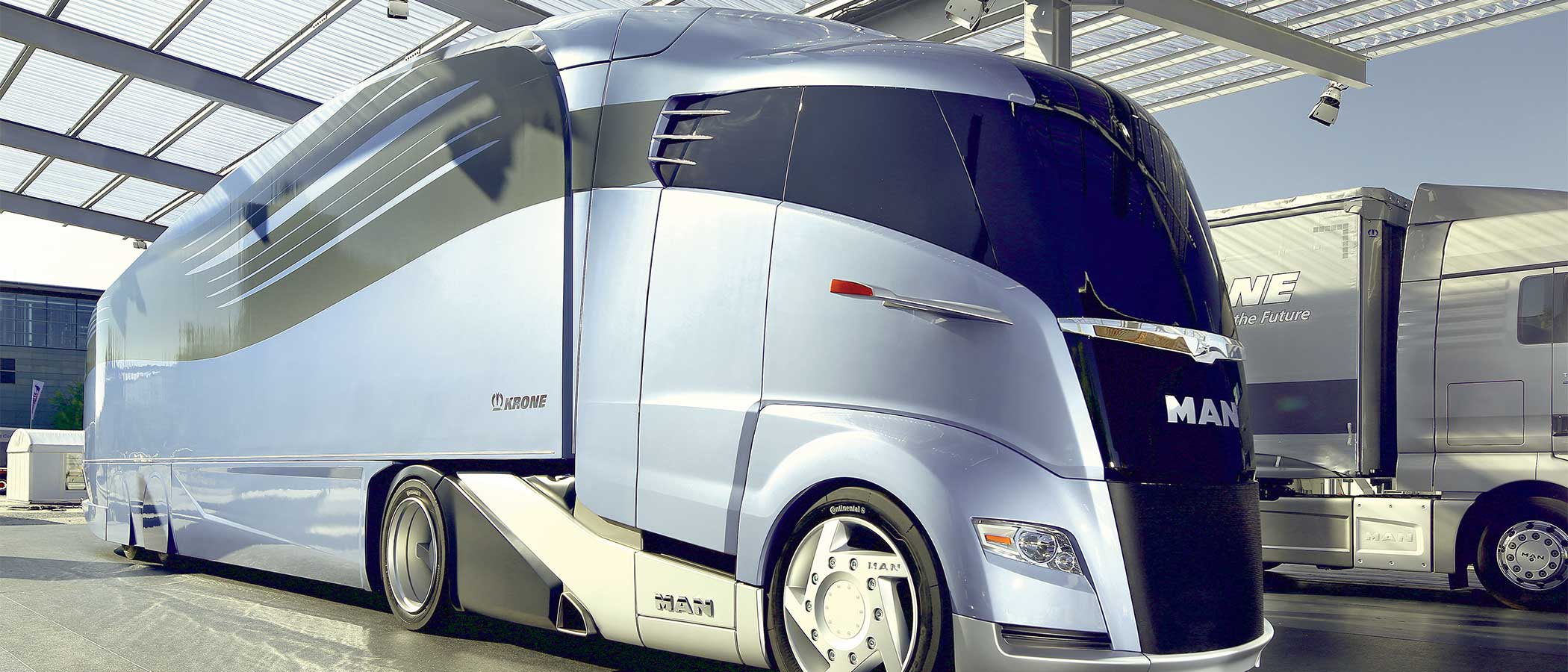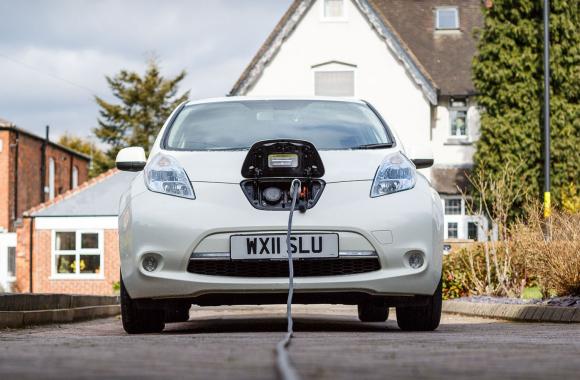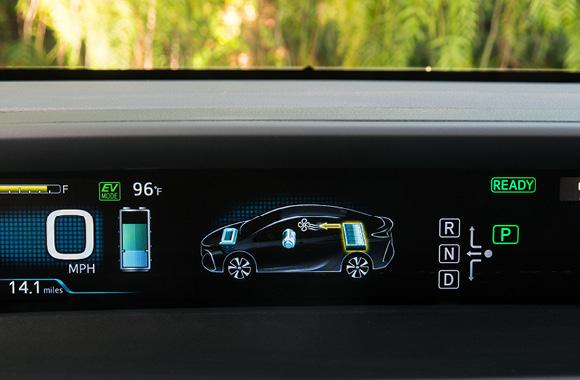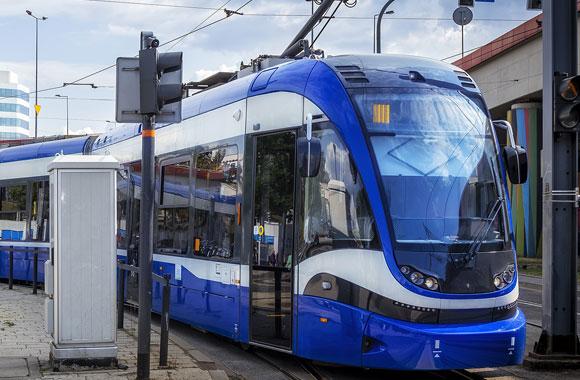Efficient Trucks
Fuel efficiency is critical to reduce truck emissions. Existing fleets can be retrofitted, while new trucks can be built to be more efficient or fully electric.
Reduced/Sequestered
2020–2050
To Implement
Operational Savings
Impact
If adoption of fuel-saving technologies grows from 1.6 percent to 8.6–9.0 percent of trucks by 2050, this solution can deliver 9.15–10.77 gigatons of carbon dioxide equivalent emissions reductions. An initial investment of US$502.57–566.56 billion to implement the solution could save US$5.21–5.96 trillion on fuel costs over truck lifetimes.
Introduction
Project Drawdown's Efficient Trucks solution involves the use of selected technologies to reduce medium and large freight truck fuel usage. This solution replaces conventional trucking technologies and approaches.
The impact of trucks on greenhouse gas emissions is oversized. Trucking produces a majority of emissions in the freight industry, with heavy trucks using about 50 percent of all freight industry energy, and light trucks using 20 percent. Comprising just over 4 percent of vehicles in the US and 9 percent of total mileage, trucks consume more than 25 percent of fuel. Worldwide, road freight is responsible for about 6 percent of all emissions.
Emissions are growing despite the use of more efficient vehicles. Design and technology measures readily available to increase a truck’s fuel efficiency include low-rolling-resistance tires, more efficient engines, devices to reduce idling and aerodynamic drag, and predictive cruise control. Such measures have been implemented to some degree in many countries. This work examines the potential emissions and financial impact of a high adoption of a package of these technologies instead of continued use of conventional trucks.
Methodology
Total Addressable Market
We defined the total addressable market for efficient trucks as the total worldwide freight demand to 2050. An efficient truck is one with a package of efficiency technologies providing around 40 percent efficiency improvement over conventional vehicles. We estimated current adoption of these technologies (defined as the amount of functional demand supplied in 2018) at 1.6 percent globally of all freight movement, driven in part by fuel efficiency and emissions standards for cleaner trucking.
Adoption Scenarios
We calculated impacts of increased adoption of the Efficient Trucks solution from 2020 to 2050 by comparing two growth scenarios with a reference scenario in which the market share was fixed at current levels.
- Scenario 1: The solution achieves 9 percent percent of the addressable market (15,880,868.08 million metric ton–kilometers) in 2050.
- Scenario 2: The solution achieves 9 percent of the addressable market (16,638,442.96 million metric ton–kilometers) in 2050.
Emissions Model
Emissions only included fuel emissions, with diesel emissions factors calculated from Intergovernmental Panel on Climate Change (IPCC) guidelines.
Financial Model
All monetary values are presented in 2014 $US.
We estimated the cost of upgrading to an efficient truck at US$25,943 and assumed the same as the difference in cost between an efficient truck and a conventional truck. Operating costs included only fuel costs for both the conventional and efficient truck. We derived them from 13 sources, including the IEA and ICCT.
Results
Scenario 1 resulted in emissions reductions of 9.15 gigatons of carbon dioxide equivalent greenhouse gases at a net first cost to implement of US$502.57 billion from 2020–2050 and a lifetime net operational savings of US$5.21 trillion.
Scenario 2 resulted in 10.77 gigatons of emissions saved at a net first cost to implement of US$566.56 billion from 2020–2050 and a lifetime net operational savings of US$5.96 trillion.
Discussion
Our results show that the long-haul heavy-truck industry could see a considerable return on investment by adopting typical fuel efficiency technologies. The relatively short payback periods of many fuel efficiency measures, combined with most trucks being commercially deployed on the road for more than a decade, ensure that fuel efficiency provides both greenhouse gas reductions and cost savings for the party paying for fuel. In addition, fuel efficiency helps reduce ambient air pollutants such as sulfur oxide, nitrous oxide, and particulate matter, which contribute to poor air quality. For these and other reasons, we expect adoption to be very high for these technologies. With variations in regulations, fuel costs, road quality, and truck models from region to region, solutions may be customized by country and truck operator.
Adoption of this solution does, however, have a few barriers:
- In many countries, the trucking industry includes a large number of small businesses and multiple stakeholders involved in trucking transactions. Higher borrowing/investment costs due to the small size of the operation could reduce the ratio of benefits to costs.
- With many truck-trailer combinations, the trailer has a different owner than the truck, creating a question of who pays for the upgrades and who reaps the benefits of fuel savings.
The adoption of fuel-saving clean technologies offers commercial truck fleets clear potential to significantly reduce global greenhouse gas emissions while generating considerable cost savings. However, there is a critical need for policy guidance to help small operators realize the financial benefits of long-term investment in these technologies.
What You Can Do
Share this page with the local offices of delivery companies that serve your community.
If you own a business, encourage adoption of fuel efficiency measure for the trucks in your supply chain.
- Expand your knowledge by exploring another Drawdown solution.
Co-benefits
Efficient trucking improves air quality by reducing the production of polluting exhaust.













